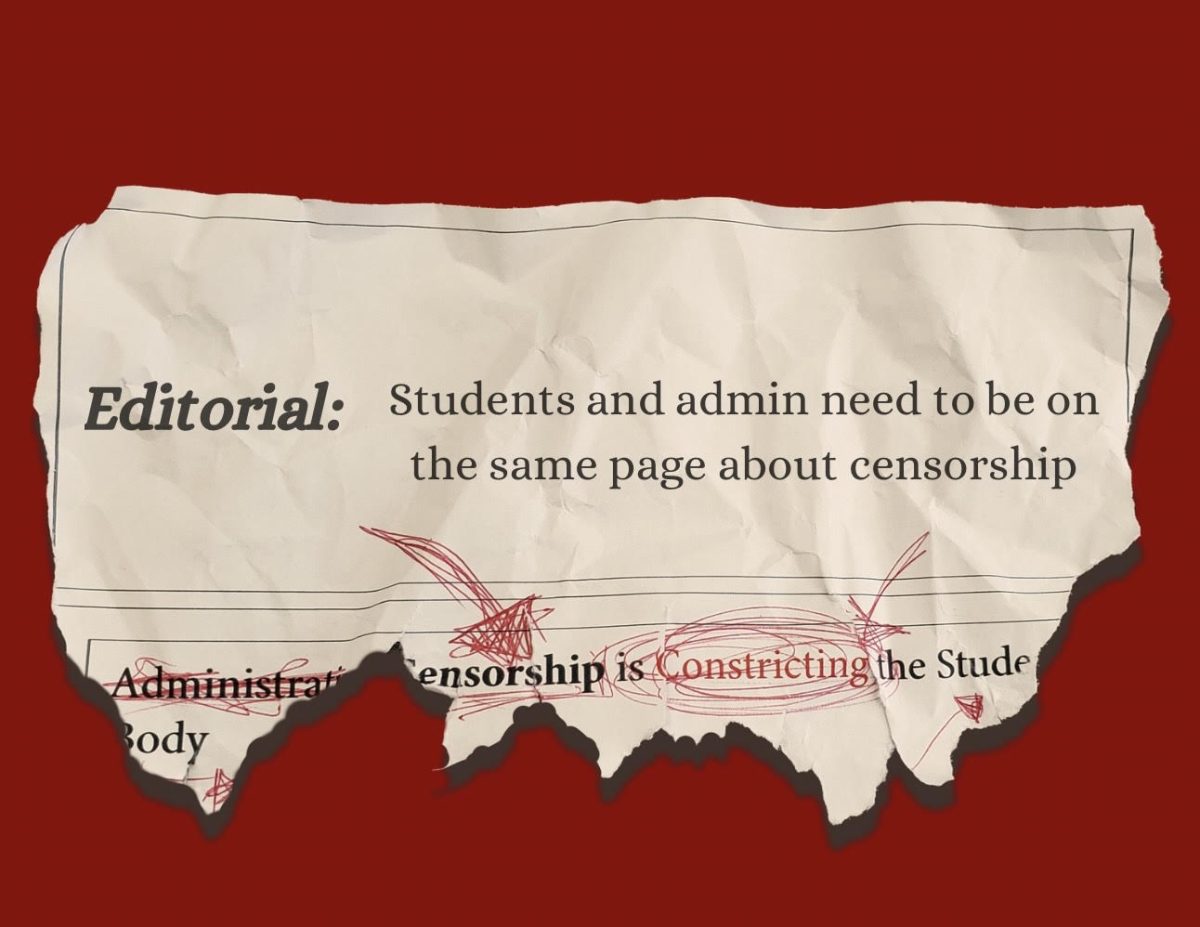One of America’s finest ideals, outlined in the First Amendment, is freedom of the press. It represents the ordinary man’s right to be informed; to have an awareness of reality within their nation and local neighborhood. People suffer when that right isn’t recognized.
Thanks to freedom of the press, ordinary people are informed about the ongoing events of the world they live in. This is a matter of such great importance because it is only when people are allowed to be informed that they have the chance to make logical decisions and form sensible beliefs.
The realm of student journalism is grounded in those same principles, aiming to arm the community with relevant knowledge that affects their lives. Unfortunately, the spheres of large-scale press and student journalism face opposition at times from a similar obstacle — wrongful censorship.
Various forms of censorship have been observed throughout history. Military censorship is practiced to strengthen national security, and speech which threatens to incite violence are rightfully kept out of mainstream broadcasts: these are examples of appropriate censorship. On the other hand, political and religious censorship have been observed in certain governments throughout time with the intent to suppress.
Student journalism has long been the subject of wrongful censorship. The community’s right to be informed is routinely denied without good cause.
In early 2022, an incident at Daniel Pearl Magnet High School in Los Angeles sparked controversy. The school’s journalism advisor was pressured by school administration to censor an article naming a campus staff member who refused to get the covid-19 vaccine. When the adviser balked at complying she was suspended for three days without pay for insubordination. Though she successfully appealed the suspension with the help of the Student Press Law Center, the situation sheds light on the threat wrongful censorship poses to student journalism.
Even Van Nuys High School recently experienced censorship. In November 2023, following the timely upload of an article covering an on-campus stabbing, LAUSD ordered that the article be temporarily removed from the student news website without explanation.
Following up with administration proved to be continually difficult for the school journalism team. Confusion and misunderstanding characterized the few interactions that took place. While the article’s reposting was eventually authorized, a lack of joint effort to resolve the situation illustrates a pattern that repeats all too often.
California Education Code 48907 (subsection A) states that the actions of student press may only be obstructed for select and specific reasons. Under the law, student journalists are prohibited from saying anything offensive, false and damaging to another’s reputation, creating disorder within school or promoting illegal activities. None of these applied in either case.
Student press is protected in California. In spite of that, repeated occurrences of inappropriate censorship throughout the state illustrate the disconnection between high school administrative bodies and journalists.
The aftermath of any unfortunate series of events calls for reflection. So, what’s to be done?
It’s tempting to point fingers and throw blame around. But that disconnect between administrative and journalistic bodies —the gap that’s proven itself to be real time and time again —won’t close on its own. Without dismissing accountability, facing that ugly truth is the first step to making wrongs right.
The greatest common factor administrations and student journalism share is the motive to operate for the empowerment, protection and good of the community —the people that are involved in a high school environment.
Administration oversees and enforces policies that maintain an orderly and appropriate school atmosphere. Student journalism aims to inform the community of and around the school. The two forces do not stand at odds with each other; in fact, it is only with the other’s cooperation that each can best perform their responsibilities.
It is within the community’s best interests, therefore, that high school administrations and journalists foster a spirit of understanding and work in tandem. If serious efforts are made to realize such an air of unification, there is no doubt that everyone can win.


